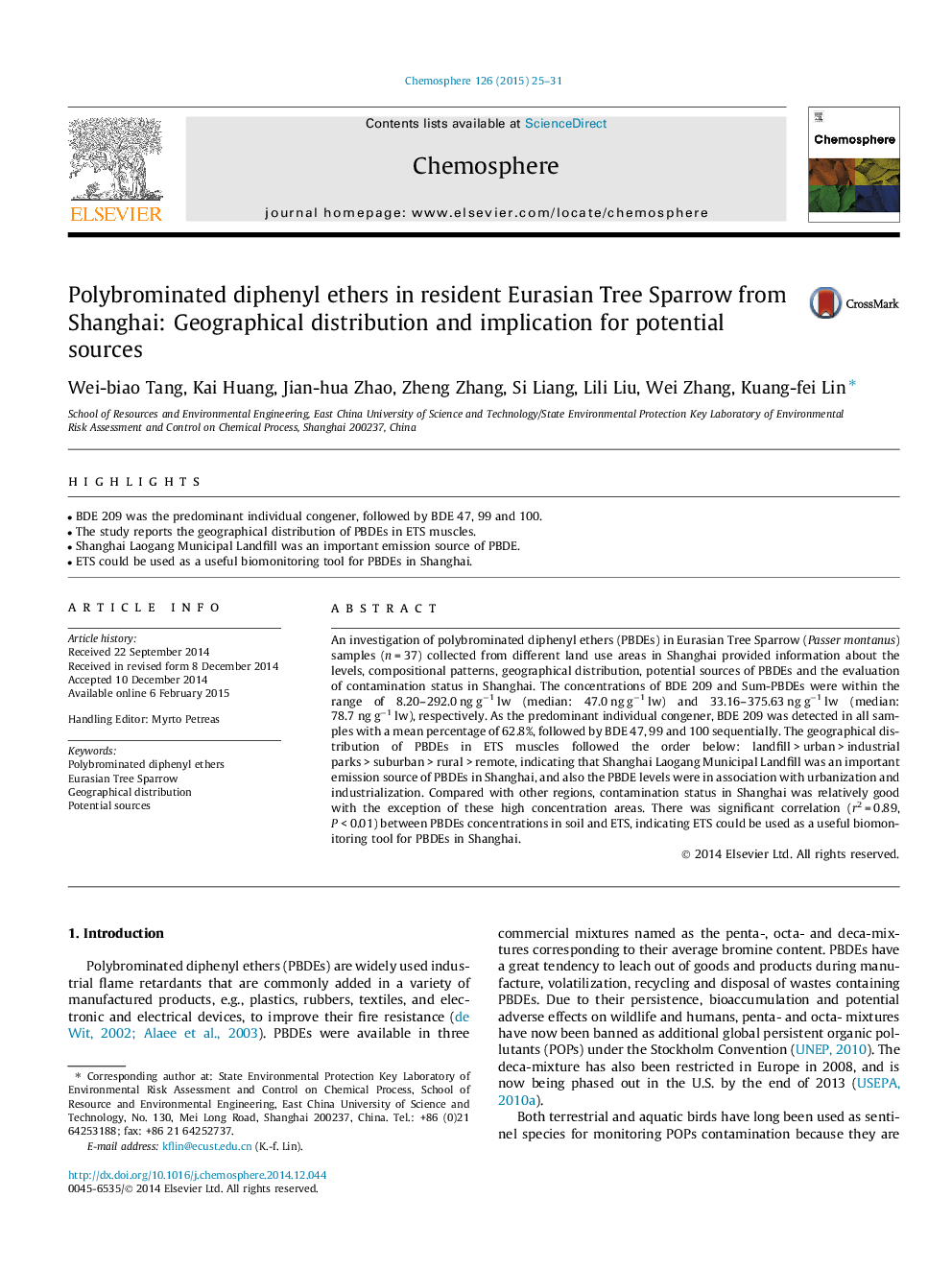| Article ID | Journal | Published Year | Pages | File Type |
|---|---|---|---|---|
| 4408413 | Chemosphere | 2015 | 7 Pages |
•BDE 209 was the predominant individual congener, followed by BDE 47, 99 and 100.•The study reports the geographical distribution of PBDEs in ETS muscles.•Shanghai Laogang Municipal Landfill was an important emission source of PBDE.•ETS could be used as a useful biomonitoring tool for PBDEs in Shanghai.
An investigation of polybrominated diphenyl ethers (PBDEs) in Eurasian Tree Sparrow (Passer montanus) samples (n = 37) collected from different land use areas in Shanghai provided information about the levels, compositional patterns, geographical distribution, potential sources of PBDEs and the evaluation of contamination status in Shanghai. The concentrations of BDE 209 and Sum-PBDEs were within the range of 8.20–292.0 ng g−1 lw (median: 47.0 ng g−1 lw) and 33.16–375.63 ng g−1 lw (median: 78.7 ng g−1 lw), respectively. As the predominant individual congener, BDE 209 was detected in all samples with a mean percentage of 62.8%, followed by BDE 47, 99 and 100 sequentially. The geographical distribution of PBDEs in ETS muscles followed the order below: landfill > urban > industrial parks > suburban > rural > remote, indicating that Shanghai Laogang Municipal Landfill was an important emission source of PBDEs in Shanghai, and also the PBDE levels were in association with urbanization and industrialization. Compared with other regions, contamination status in Shanghai was relatively good with the exception of these high concentration areas. There was significant correlation (r2 = 0.89, P < 0.01) between PBDEs concentrations in soil and ETS, indicating ETS could be used as a useful biomonitoring tool for PBDEs in Shanghai.
